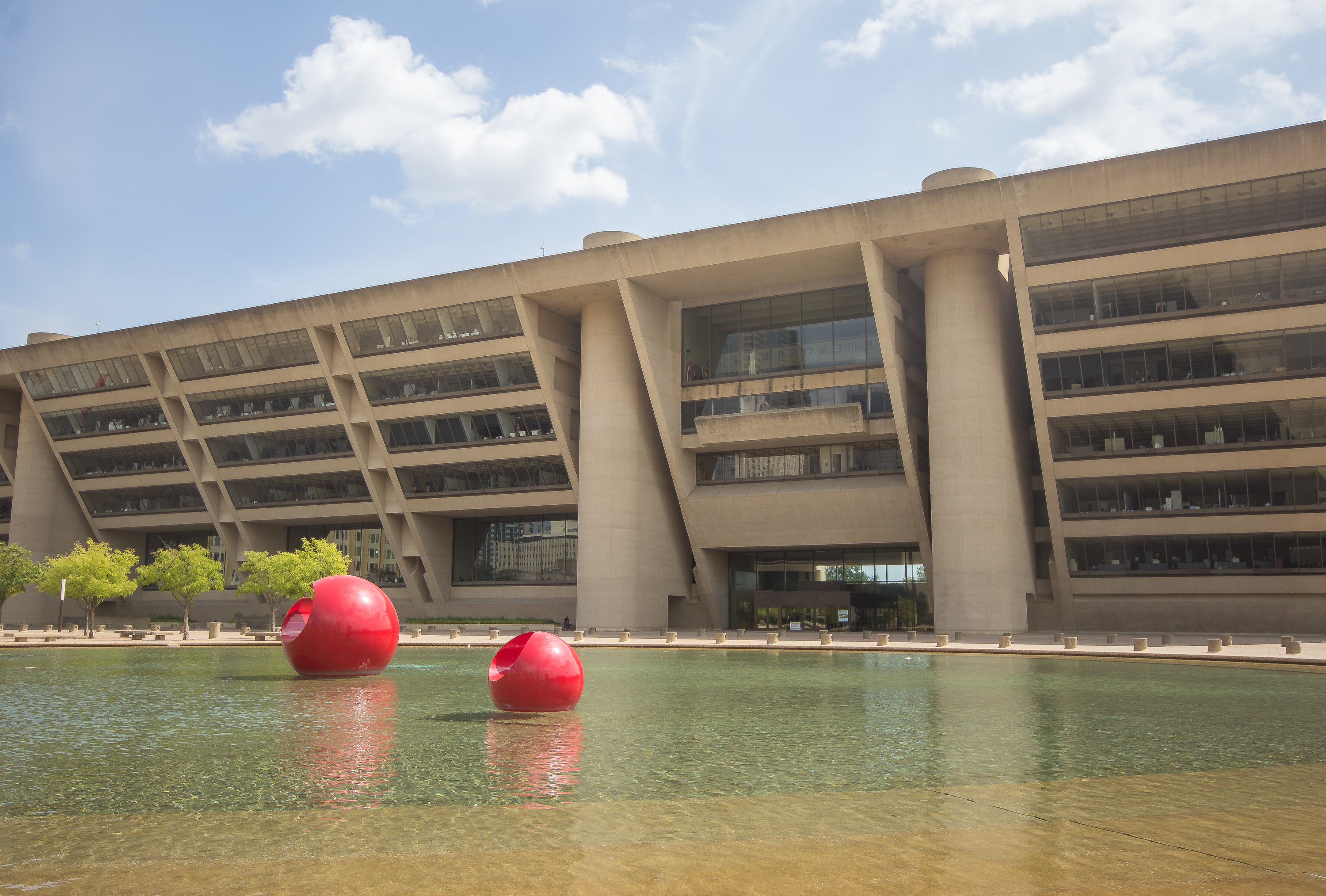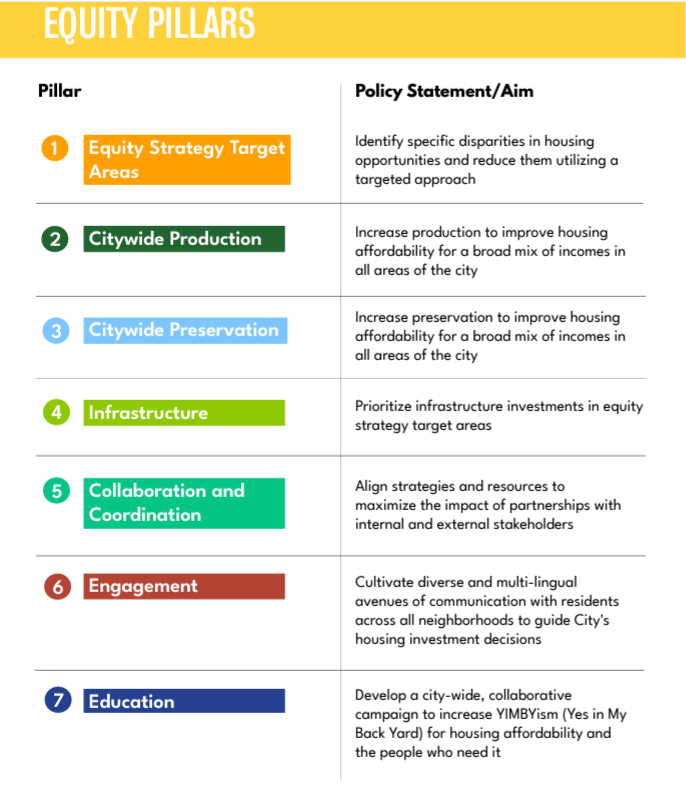Last week, the Dallas City Council voted 12-2 to approve a housing policy that seeks to identify and fix disparities in housing opportunities throughout the city.
The policy takes into account the city’s recently adopted racial equity plan, as well as insight from the city’s land use plan, called Forward Dallas. The goal is to find the areas where housing affordability is unbalanced and reduce that imbalance. The city wants to increase new housing, revitalize and maintain older stock, and improve affordability throughout the city by creating more mixed-income communities.
It’s ambitious, especially considering the city has struggled to implement past policies that add more affordability and density. It sets out to achieve its goals by creating benchmarks for new housing, community engagement, infrastructure improvements to support that growth, and education to battle neighborhood opposition to density.
The city’s housing department will have an implementation plan that will run anywhere from six months to a year. As part of that effort, there will be an advisory housing task force, and city staff will provide regular progress reports to the city council’s Housing and Homelessness Solutions Committee.
But during that discussion, the question became this: Without a gut check by the Council and Dallas residents, would this policy become more aspirational than functional? City Manager T.C. Broadnax said as much when he attempted to summarize why the policy was needed.
“The bottom line is, we don’t have enough affordable housing,” he said. “We don’t have enough places that people are willing to accept affordable housing, whether single-family or multifamily.”
But more than that, Broadnax threw down the gauntlet. The city would work to make sure that affordable housing was balanced everywhere in the city, but it couldn’t continue to allow communities that were overburdened with affordable housing—in particular multifamily housing—to continue to be so.
“Multifamily is fine til it shows up in your neighborhood,” he said. “We’ve got to get past that as a community. I think this policy will help us do that … The goals can’t keep changing based on what neighborhood we’re talking about.”
Councilwoman Cara Mendelsohn, who represents Far North Dallas, took umbrage with Broadnax’s assertions and voted against the policy. As did Councilman Adam McGough, who represents the Lake Highlands and northeast area of Dallas.
Mendelsohn said she didn’t feel that there had been enough community engagement. City staff said more than 2,000 people provided input, and Councilman Casey Thomas said he felt that the city’s outreach level was strong. “You can take a horse to water, but you can’t make him drink,” he said, adding that some people don’t respond to city meetings and surveys because they already support the effort and don’t see the need to weigh in.
Mendelsohn said she also felt that the policy leaned too heavily on multifamily housing as opposed to home ownership. She said she believed it focused too much on race and not enough on poverty.
“When we look at the racial disparity of homeownership, this is a symptom of poverty,” she said. “The focus of this Council has not been on addressing poverty issues; it’s solely on exacerbating racial issues, in my opinion.”
Broadnax said that race is absolutely a factor in the discussion about housing policy, because of historic inequities that have shaped the city’s previous policy. Those include federal issues like redlining, but also historic disinvestment by City Hall.
“There has been an overload of single-family and wealth-building opportunities in the northern parts of our city,” he said, adding that southern Dallas is inundated with multifamily by comparison.
Mendelsohn disagreed, and said that Far North Dallas and North Dallas has “very significant amounts of multifamily.”
“So when we tell you we’re not looking to have more, there’s a reason,” she said. “It is 35 percent single family. There’s plenty of multifamily. And it’s perfectly fair for me to criticize things that I’ve been criticizing and haven’t been changed.”
She later said on Twitter: “The 2 city districts with the most affordable housing units are #D12 & #D10 & we voted against this plan seeking to increase rental units in all districts and spend $ to “educate” residents not to be NIMBY.”
But is the equitable placement of affordable housing happening in Dallas?
A January memo from city staff to the council broke down the percentages of affordable housing in each council district. Affordable can mean many things, but federal standards identify rent that equals 30 percent of the adjusted median income (AMI) of an area as low income. That would be an individual who makes no more than $18,700 a year or $26,700 for a family of four. Rent based on 60 percent and 80 percent of that AMI is the housing that would be affordable to nurses, teachers, firefighters, and police officers. (Between $37,380 and $49,850 for a single earner and $53,400 to $71,200 for a family of four.)
Districts 11, 12, and 13 (all North and Far North Dallas) carry the smallest amount of housing for residents earning 30 percent AMI at 1 percent. Districts 4, 7, and 8 (all southern Dallas districts) carry the most at 8 percent each. When it comes to housing equal to 80 percent AMI, District 14 (Downtown, Uptown, and parts of East Dallas) has the least at 35 percent, while District 4 in South Oak Cliff has 92 percent.
“Concentrations of housing affordable to 30 percent AMI are also evident in some council districts, with others only having 1 percent of units in the district set aside for the lowest income households,” the memo said. “However, not a single district meets the proposed 10 percent of units for this income group.”
In other words, the lower the AMI, the less equitably placed the housing is.
David Noguera, the city’s director of Housing and Neighborhood Revitalization, said the policy is intended to guide the city as it creates opportunities for more housing. On more than one occasion, Noguera and city council members called it a “North Star.”
The policy outlines seven pillars of housing equity that will guide the city’s housing efforts. They include things like homing in on specific inequities, increasing housing production citywide, improving infrastructure to support new construction and development, engaging with communities about their needs, and providing more education to try to head off NIMBYism at the pass. Along with the new policy, a Dallas Housing Resource Catalog (DHRC) details all available housing programs, as well as things like funding sources. It also shows how each program and resource aligns with the seven pillars.
“We’re using more of a targeted approach rather than waiting for developers and residents to come to us and sprinkling around investments citywide,” he explained. “We’re working with the community to identify what those targeted areas would be. Then we’re Investing in those targeted areas in a comprehensive manner.”
Already, city staff has been working to find more opportunities to create mixed-income opportunities, he said.
“We work with developers, we work with residents, and those efforts will continue,” Noguera said. “There are no mandates. What this policy will do is help us channel those efforts to targeted areas so that when you look at revitalization, you can actually see that we didn’t just do a project in an area, we did lots of different activities, and it won’t just be housing.”
The plan is purely housing. It doesn’t mention zoning at all, although Broadnax brought up the city’s historically exclusionary zoning practices in North Dallas during the discussion. Much of what creates equitable housing goes beyond erecting walls. Where those houses are legal to build in relation to industrial operations, for instance, is another important question.
Already, the city is the subject of a HUD complaint about its practice of allowing industrial zoning next to residential. The economy will be another issue. The city is tackling food deserts in lower-income communities. Is there a plan to make sure the residents of this prospective new housing have access to fresh food? The city will also need to coordinate with partner agencies like Dallas Area Rapid Transit to ensure transportation needs are met.
The city adopted a housing policy last week with an eye toward affordability and equity. As the city invariably encounters demands in the future from unhappy community members, whether the city (and its Council) can put it into practice is perhaps the biggest unknown of all.
Author








